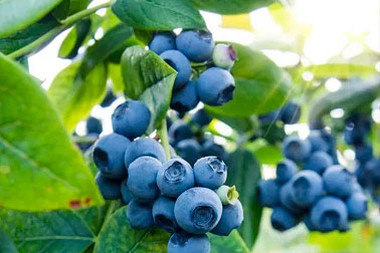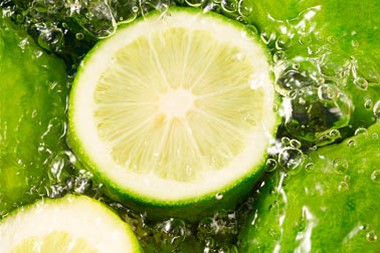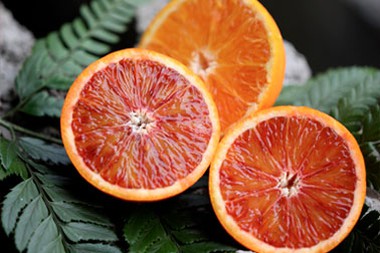Impatiens Balsamina Extract, commonly known as balsam or garden balsam, is a beautiful flowering plant that belongs to the family Balsaminaceae. It is native to tropical regions of Asia, including India, Myanmar, and Malaysia. This plant has a rich history and has been cultivated for both ornamental and medicinal purposes for centuries.
The cultivation of Impatiens balsamina can be traced back to ancient times. Historical records indicate that it was highly valued in the gardens of ancient civilizations such as India and China. In these cultures, the plant was regarded as a symbol of beauty and was commonly used in religious rituals and ceremonies.
During the 16th century, it gained popularity in Europe as a decorative garden plant. It was introduced to European botanists and gardeners by Dutch traders who had encountered it during their travels to the East. Its vibrant and showy flowers, which come in various colors including pink, red, purple, and white, captured the attention of horticulturists and soon became a favorite among garden enthusiasts.
The plant's common name, balsam, comes from the healing properties associated with its sap. The sap of it was traditionally used in folk medicine to treat various skin conditions, such as burns, wounds, and rashes. The liquid produced by the plant when its stems or leaves are broken contains substances with soothing and anti-inflammatory properties. It was commonly applied topically to relieve discomfort and promote healing.
As the popularity of it grew, breeders and horticulturists began developing new cultivars with improved characteristics. These efforts led to the development of numerous hybrids and varieties that showcased a wider range of colors, flower forms, and plant sizes. The introduction of double-flowered forms, with densely packed petals, further enhanced the appeal of this plant.
Impatiens balsamina's adaptability to various growing conditions contributed to its widespread cultivation. It thrives in partial shade or dappled sunlight and prefers well-drained soil. The plant is known for its ability to bloom continuously throughout the growing season, providing a constant display of colorful flowers.
In recent years, it has faced some challenges due to a plant disease known as impatiens downy mildew (IDM). This fungal disease affects the leaves and stems of the plant, causing them to yellow, wilt, and eventually die. The spread of IDM has led to a decline in the cultivation of it in certain regions.
To combat this issue, researchers and breeders are actively working on developing resistant varieties that can withstand the impact of impatiens downy mildew. These efforts aim to ensure the continued availability and enjoyment of it in gardens and landscapes.
In conclusion, it has a rich history that spans centuries. From its origins in Asia to its widespread cultivation in Europe and beyond, this flowering plant has captivated people with its vibrant colors and ornamental value. Additionally, its traditional medicinal uses and adaptability have contributed to its enduring popularity. While challenges such as impatiens downy mildew have arisen, ongoing research and breeding efforts are focused on overcoming these obstacles and preserving the legacy of it for future generations to appreciate.

Is Impatiens Balsamina Extract a medicine?
It derived from the Impatiens balsamina plant, has gained attention in recent years for its potential medicinal properties. While it is not classified as a conventional medicine, it is used in various traditional systems of medicine for its therapeutic benefits. This article aims to explore the properties and applications of it and its potential in the field of medicine.
Overview of it
Impatiens balsamina, commonly known as the garden balsam or touch-me-not, is a flowering plant native to South Asia. It belongs to the family Balsaminaceae and has been used in traditional medicine systems like Ayurveda and traditional Chinese medicine for centuries. The extract is typically derived from the plant's flowers, leaves, and stems, which contain various bioactive compounds.
Anti-inflammatory properties Some studies suggest that it may possess anti-inflammatory properties, which could be beneficial in managing inflammatory conditions like arthritis and inflammatory bowel diseases.
Antioxidant activity The presence of flavonoids and phenols in it indicates its potential antioxidant activity. Antioxidants help combat oxidative stress and protect cells from damage caused by free radicals.
Wound healing Traditional uses of it include its application on wounds to promote healing. Although scientific evidence is limited, its antibacterial and anti-inflammatory properties could contribute to wound healing.
Antimicrobial effects Some studies have found that it exhibits antimicrobial activity against certain bacteria and fungi. This suggests its potential use as a natural alternative for managing microbial infections.
Skin care applications Due to its antioxidant and anti-inflammatory properties, it is used in some skincare products. It is believed to help soothe irritated skin, reduce redness, and promote a healthy complexion.
Potential Medical Applications
While it is not considered a medicine in conventional terms, it has potential applications in complementary and alternative medicine. Here are a few areas where further research could explore its potential
Traditional medicine systems it has been traditionally used in Ayurveda and traditional Chinese medicine for various conditions. Further studies could investigate its efficacy and safety for specific ailments within these systems.
Integrative medicine Integrative medicine combines conventional medical practices with evidence-based complementary therapies. it could be explored as a potential adjunct therapy in integrative approaches for managing certain health conditions.
Nutraceuticals and dietary supplements Given its potential health benefits, it might find its way into the formulation of nutraceuticals or dietary supplements. However, rigorous scientific studies are needed to evaluate its safety, efficacy, and appropriate dosage.
Conclusion
it possesses various bioactive compounds that exhibit potential health benefits. While it is not considered a conventional medicine, it is utilized in traditional medicine systems and could have future applications in complementary and alternative medicine. Further research is required to understand its mechanisms of action, validate traditional uses, and determine its safety and efficacy. As with any herbal extract, it is crucial to consult healthcare professionals before using it for medicinal purposes.
What is Impatiens Balsamina used for hair?
Nourishes the Scalp
One of the key benefits of it for hair is its ability to nourish the scalp. The plant contains essential nutrients, vitamins, and minerals that help maintain a healthy scalp environment. Regular application of Impatiens balsamina-infused products can nourish the hair follicles, leading to stronger and healthier hair growth. Additionally, it can help alleviate dryness and itchiness of the scalp, promoting overall scalp health.
Promotes Hair Growth
it is believed to have properties that stimulate hair growth. The plant extracts contain certain compounds that may improve blood circulation to the scalp, thereby ensuring an adequate supply of nutrients to the hair follicles. This increased blood flow can help rejuvenate dormant hair follicles, leading to enhanced hair growth. Regular usage of Impatiens balsamina-based hair products may contribute to the improvement of hair density and thickness.
Strengthens Hair
Weak and brittle hair is a common concern for many individuals. it is known for its potential to strengthen hair strands and reduce hair breakage. The plant extracts can help nourish and fortify the hair shaft, making it more resistant to damage caused by external factors such as pollution, heat styling, and chemical treatments. Strengthened hair not only appears healthier but also tends to grow longer over time.
Conditions and Softens Hair
it is often used in hair care products due to its excellent conditioning properties. The plant extracts can help restore moisture to dry and damaged hair, making it more manageable and easier to style. Regular use of Impatiens balsamina-based conditioners or hair masks can provide hydration to the hair strands, leaving them soft, smooth, and shiny.
Soothes Scalp Irritation
Irritated and inflamed scalp can cause discomfort and may contribute to hair problems. it possesses soothing properties that can help alleviate scalp irritation. It may reduce itchiness, redness, and inflammation, providing relief to individuals with sensitive or problematic scalps. Incorporating Impatiens balsamina-based products into hair care routines can help maintain a calm and healthy scalp environment.
Conclusion
Impatiens Balsamina Extract, with its numerous beneficial properties, has gained recognition in the hair care industry. From promoting hair growth and nourishing the scalp to strengthening hair strands and soothing scalp irritation, this plant offers a natural and herbal solution for various hair-related concerns. While further research is needed to fully understand the mechanisms behind its effects, it remains a popular choice for individuals seeking natural alternatives for hair care. Incorporating products containing it into regular hair care routines may contribute to healthier, stronger, and more vibrant-looking hair.
please contact us at email: selina@ciybio.com.cn



